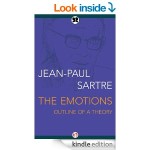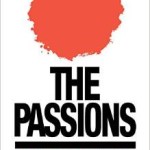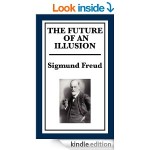
An Interview with Andrea Scarantino (August 2014)
Nico Frijda is Emeritus professor in experimental and theoretical psychology at the University of Amsterdam. He is one of the co-founders of ISRE, and the former director of the Institute for Emotion and Motivation at the University of Amsterdam. He is currently a member of the Royal Netherlands Academy of Sciences and the American Academy of Arts and Sciences. His work has almost single-handedly revived action-based theories of emotions, which identify emotions with states of action readiness. He is the author of several books, most prominently The Emotions (1986) and The Laws of Emotion (2007), and dozens of highly influential articles on emotional appraisal, emotional regulation, emotional experience, facial expressions and cultural differences in the emotion domain.
You grew up in the Netherlands. How would you describe your childhood and adolescence? Did your family try to instill in you a passion for knowledge? Did you have intellectual role models growing up?
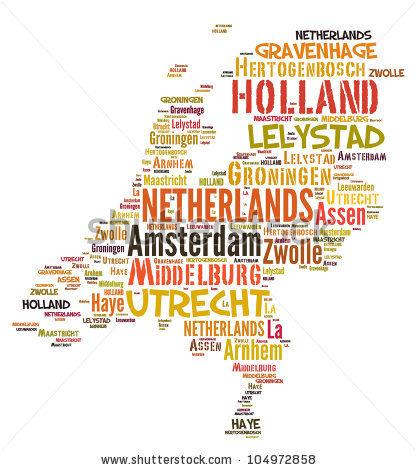 My childhood was rosy. I was the youngest of three children, and therefore my mother’s spoiled favorite. My family was reasonably well-to-do, and an intellectual one. My father was a university professor in economics, but he was withdrawn behind the four-inch thick door of his study. My mother was his wife who cooked and sang with us (elder brother, elder sister, with my mother behind the piano). That is how things were back in the nineteen-thirties in the Netherlands.
My childhood was rosy. I was the youngest of three children, and therefore my mother’s spoiled favorite. My family was reasonably well-to-do, and an intellectual one. My father was a university professor in economics, but he was withdrawn behind the four-inch thick door of his study. My mother was his wife who cooked and sang with us (elder brother, elder sister, with my mother behind the piano). That is how things were back in the nineteen-thirties in the Netherlands.
I wanted to become an airplane pilot, until my adolescence. At that time I had little or no intellectual role models, nor a manifest passion for knowledge. I played with toy planes and toy cars. But the playing with toy cars and toy planes was embedded within protracted imaginations about fighting with evil strangers,– the preludes of political disasters to come, and the war.
You were persecuted as a Jew during WWII. Do you ever think about that tragic time these days? Is your Jewish identity important to you today?
 Do I ever think about that time? About once every week or so, up till now. WWII provided unasked-for training in warding off emotions and in efforts to neutralize the significance of events. When I turned 13 the war started, and the Netherlands were overrun. Jewish children had to leave their schools and enroll in separate institutions, they were not allowed on the streets after 8 pm, and they were not allowed to go to the cinema.
Do I ever think about that time? About once every week or so, up till now. WWII provided unasked-for training in warding off emotions and in efforts to neutralize the significance of events. When I turned 13 the war started, and the Netherlands were overrun. Jewish children had to leave their schools and enroll in separate institutions, they were not allowed on the streets after 8 pm, and they were not allowed to go to the cinema.
Soon after the war’s beginning, deportations started. Jewish people were dragged from their homes, and put in trains to camps in unknown places. A few, like my parents and sister, managed to go into hiding with guest families found by underground resistance groups, mostly consisting of students. All members of our family were hid at separate locations. None of us knew where the others were. My brother joined an armed resistance group. We hardly ever came outside the houses that hid us.
Is my Jewish identity important for me today? I never think about my being Jewish that way. I am a Jew, and I know it, and persecution made it consequential. But religion played no role for us, in my family. Our family was a secular family. As early as my adolescence, I found the notion of an all-wise and all-protecting God to be a fantasy. The trouble is that when such fantasy gets out of control, as it often does up to the present day, people end up killing one another. God is a vengeful god, says the holy book. Fantasy can be a gift as well as a poison. For many of the Jews who survived WWII, God died in Auschwitz.
But the period of living in hiding with various families made me encounter people from very different social environments, worldviews, and personalities. It laid the basis for my being intrigued by the phenomena of emotions. In addition, this also was the period of my adolescence in which I was away from my family, so it was mostly a lonely time. It made me ponder life, and reflect on the nature of emotions and on the meaning of life. Immediately after the war, I entered the study of psychology at Amsterdam University.
Prior to getting your PhD in psychology, you worked as clinical psychologist at the Dutch Army Neurosis Center and at the youth delinquency center at the Ministry of Justice. Did this clinical engagement with mental disorders affect your future theoretical research on emotions, and if so how?
My work in clinical psychology came out of the then obligatory military service of men having reached 18 years of age. I was placed with the medical troops, and detached to that neurosis center. But my interest in emotions did not emerge from that clinical engagement. As I mentioned, it emerged through meetings with
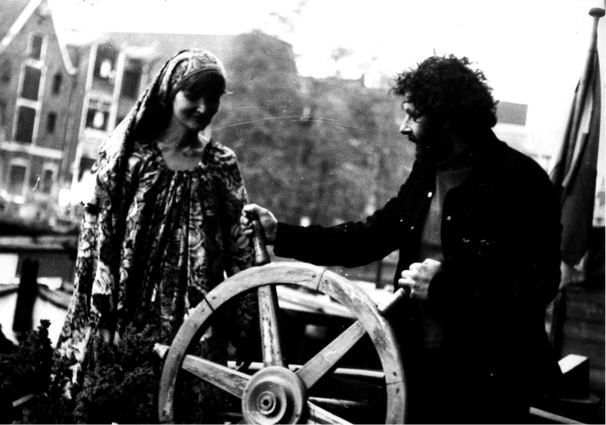
people with very varied provenances and life views, such as people with the amazing conviction that venereal disease was caused by masturbation and premarital sexual intercourse. But the major push towards becoming interested in emotions was provided by falling in love, at the age of 18, immediately after having entered the university.
She was a very emotional girl. What amazed me was the combination of the constant and variable display of her feelings, and of my ability to somehow grasp what these displays meant. It presented a gift and a miracle. How on earth was that possible? How could what was on the inside show at the outside? The major surprise was, perhaps, that having fallen in love was not primarily a feeling.
Most of all, it proved to be a set of desires and action inclinations. It started from the desire to always be with her. And it culminated in the desire to embrace her, with its prolongation in actually embracing her, plus what tended to come after. This was 1945. We started to live together, with much enjoyment. It did not last for very long. Yet the friendship persisted. I visited her just two weeks ago. We still professed considerable mutual warmth.
What would you have done if you had not been a scientist?
When working at my PhD, I considered becoming a psychotherapist. I followed part of training in psycho-analytic theory, until I abandoned that because the evidence for many of the mechanisms presumably involved appeared too weak to me. I preferred to improve my insight in the processes that might be involved in producing the phenomena that are called “emotions”: cognitive processes, experiences, behaviors or actions, physiology, and neural and neurohumoral processes. But, of course, who can tell what I would have done, had I not become a scientist? There are other kinds of trades satisfying a general desire to understand than those of a scientist. Trying to understand people who suffer, and doing something about one or two of them, would have been a meaningful calling.
You got your PhD in 1956 at the University of Amsterdam with a thesis entitled “Understanding Facial Expression of Emotions”. Why did you choose this specific topic and what is your current view on what expressive behavior is?
The reason for choosing the topic is obvious from its origin: I had been fascinated by the facial reactions of a person I had watched closely and by my ability to interpret them correctly. “Understanding” facial expressions became the topic of my Masters thesis. How is such understanding possible? This question inspired my first empirical study.
I invited a fellow student to my place, and I designed a number of emotional “stimuli,” such as presenting her with a pair of nylon stockings (all this took place in 1948 or so), giving her fresh strawberries, making a compliment or two, launching a firecracker, or just filming when she gazed outside. I filmed her face during each incident, and in addition I subsequently made a slide of what appeared as the high point of each filmed sequence. I then showed the films, as well as the slides, to a number of subjects, asking each of them to describe what they thought my fellow students had experienced (films and slides were made of two different students), and comparing that to what I knew had happened.
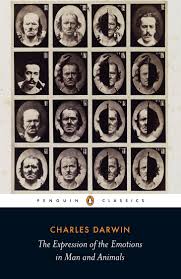 The methodology obviously was both informal and primitive. The subjects were not asked to select an emotion label from among a list of such labels, as was generally done in the early days of investigating the recognition of emotion. The subjects gave free descriptions (in Dutch, as it happened). And, surprise surprise, they hardly mentioned any emotion label at all. Rather, they described “what had happened to her and what she had felt,” or “what she had done”, such as “pulling back” or “being interested in what she saw”. What the subjects saw and described was a melody of actions whereby the subject established a relationship to, or withdrew from, the object of her attention.
The methodology obviously was both informal and primitive. The subjects were not asked to select an emotion label from among a list of such labels, as was generally done in the early days of investigating the recognition of emotion. The subjects gave free descriptions (in Dutch, as it happened). And, surprise surprise, they hardly mentioned any emotion label at all. Rather, they described “what had happened to her and what she had felt,” or “what she had done”, such as “pulling back” or “being interested in what she saw”. What the subjects saw and described was a melody of actions whereby the subject established a relationship to, or withdrew from, the object of her attention.
I concluded that what facial expressions show are not in the first place states that can be described by emotion names like “anger” and “fear”. They indicate how the perceived person relates (or does not relate) to an event or object in the environment. She or he appeared to “open up”, or “close down”, “shut off” or “strain to…” or “attend to,” “seek to approach” or “seek to get closer” or “be reserved”, “pull back”, or “lack interest”, or “relate to with restraint”, or “expose her- or himself to be looked at”. Such descriptions formed the source of my notion of “action readiness”, a notion I later found had already been proposed by Dewey (1985). States of action readiness are part of the complex of response components sloppily referred to by emotion names. The attitudinal or relational content is open to perceptual assessment, necessitating little or no linguistic input.
“Expressive behavior” thus can be characterized as “relational behavior”. It establishes or modifies the agent’s self-object relationship. Its function is not to let other individuals know about one’s state of mind. The movements are not signals to let others know what one feels. They are moments or brief sequences of interpersonal interactions of various sorts: grasping a moment of approach, of information intake, of moderating the fullness or detail of that information and spatial proximity.
In 1986, you published your masterwork, The Emotions, which established you as one of the most original and influential voices in contemporary emotion theory. One of the central themes of your book is the idea that emotions are action tendencies with control precedence. Can you explain what that means, and why we should privilege actions rather than cognitions or feelings in our attempt to understand emotions?

I do not exactly hold the view that “emotions are action tendencies”, since the word “emotion” has no agreed-upon definition. The word broadly refers to patterns of major components (they can be indicated as “multicomponential responses”, as suggested by Klaus Scherer). But “action tendencies” form a major component among them, and are the most directly consequential of all. Action tendencies are states of readiness to execute an action that is deemed capable of modifying a current situation in a particular way. “States of readiness” consist of subthreshold activations of neural and motor dispositions enabling the action concerned (such subthreshold activations can be recorded when people imagine performing actions).
Actual actions appear when the subthreshold activations turn supra-threshold. Actions may establish or modify self-object relationships in manifold ways. The self can get closer to an object, or start interacting with it, or seek to interfere with an object’s actions, or seek to maintain the current relationship in spite of current internal or environmental influences. Action tendencies thus have an aim. If the current situation lends itself to it, the state of readiness will actually activate an action or action sequence from the individual’s repertoire that appears capable of achieving the aim of relationship modification or relationship maintenance.
Action tendencies and other states of action readiness are not properties of agents. They are not states of the individual. They are forms of individual-world interactions. They can modify the world. They allow an individual’s engagement with the world. They entail that the individual “reaches out to the world”, in the words of the philosopher Robert Solomon, in parallel to how the world impacts the individual. States of action readiness compose a highly varied collection of inclinations. They vary in kind of aim, as well as in the power, control precedence, and subtlety of the action readiness and eventual actions. “Control precedence” refers to the observation that emotional actions vary appreciably in the precedence they are given when several actions compete for preparation or execution. Some actions suffer no delay. One may interrupt one’s actions, or interrupt the actions of someone else. Control precedence suggests importance of the issue, or power of the stimulus at stake.
Engagement involves being ready to act to establish or modify or disrupt some relationship and, in the event, to actually act to implement that relationship. One can take cognizance of the world, or some of its aspects. One can also approach it, or increase or diminish interacting, or seek to affect it, or move in conjunction with it, as in dancing or in loving, or in hating, for that matter. One can be inclined to embrace. But one also can be inclined just to look deeply into someone else’s eyes, thereby establishing a sense of linkage, and a readiness of attending and moving together.

Even when, for instance, looking into the eyes of a photograph of the actress Penelope Cruz, one may notice the sinking feeling in one’s stomach that, I think, triggers abandoning to the mutual looking, and to being grasped by some action tendency of interpersonally fusing. States of action readiness can be powerful, requiring physical energy. They also can be largely virtual, as they do in “refined emotions” that are products of imagination. One can imagine floating in space as free as a bird or hovering as a butterfly around a flower, presumably paralleling subthreshold activation of corresponding neural networks.
States of action readiness can be of infinite duration. They can take as much time as needed to achieve the action tendency’s aim. That can take the shape of a brief infatuation, of a life-long passion, or of an addiction that is maintained by consumption, at high social and interpersonal costs. Likewise, decreases of action readiness also can continue over a long time, by discouragement, or lack of belief in oneself, or in states of depression. All this implies that actions and action readiness are not privileged in the analysis of emotions. But they sure belong to the major sets of processes and phenomena in the multicomponential patterns that the word “emotion” denotes. They are on the path along which perceived objects or events elicit action. They are what renders emotional response patterns events with consequences, since they can affect aspects of the world. Moreover, action readiness and action in a sense are more basic than feelings, since feelings largely are the conscious reflections of states of action readiness. And on that same path lie cognitions, as these underlie appraisals, which lead to changes in action readiness.
Let us talk about appraisals then. What is your current understanding of what an emotional appraisal is? And are any two emotions, say shame and guilt, always differentiated by their appraisals?
Appraisal is the antecedent to any action readiness or action. Appraisal is where action readiness comes from. No appraisal, no urge for action, and no emotion. Appraisal and action readiness form a sequence that represents the core of any emotional reaction. The notion of “appraisal” includes any kind of information that forms part of a perceived event’s meaning, as seen from the vantage point of a given person or animal. It includes the event’s experienced affective value: its attractiveness or averseness. All this represents “cognitions”, but with immediate hedonic repercussions and with positive and negative consequences for the individual’s concerns.
 The information on which appraisals are based can be of two kinds. It can pertain to what the event may do or offer to the individual (e.g., hurt him or her, carry satisfactions or signal likely coming satisfactions, deprive him or her from satisfactions). And it can pertain to “affordances”: possibilities for actions suggested by the current environment, as for instance perceiving an object as an object behind which to hide when under threat, or a cup as an object to pick up and drink from. Perceiving affordances activates the relevant action dispositions, and may actually prime these action dispositions, as when perceiving someone else having an attractive skin may make the fingers of the perceiver tingle.
The information on which appraisals are based can be of two kinds. It can pertain to what the event may do or offer to the individual (e.g., hurt him or her, carry satisfactions or signal likely coming satisfactions, deprive him or her from satisfactions). And it can pertain to “affordances”: possibilities for actions suggested by the current environment, as for instance perceiving an object as an object behind which to hide when under threat, or a cup as an object to pick up and drink from. Perceiving affordances activates the relevant action dispositions, and may actually prime these action dispositions, as when perceiving someone else having an attractive skin may make the fingers of the perceiver tingle.
Beyond this, appraisal of an object or event strongly depends upon the appraising individual: upon his or her current concerns, his or her goals, sensitivities, interests, and values. One boy may view a girl passing by as an opportunity for obtaining erotic satisfaction, while another may see in her just the threat of rejection. In a sense, appraisal does not result from “appraisal processes”. The information mostly just happens to come in or emerge from one’s interactions with the environment. One usually does not set out to appraise events. Elements of information, including personal meanings, just are associatively connected to elements of perceptual input. The affective appraisals just promote themselves by drawing attention. Nor do appraisals need be articulate or conceptualized. They just dissolve into feelings that motivate increase or decrease in interacting with the stimulus situation.
 Also, two emotions are mainly different by virtue of different appraisals having precipitated different changes in action readiness or action. Self-inflicted transgression of some social norm may instigate hiding from other people, which more or less defines that emotion as “shame”. Having caused harm to someone else is a major antecedent of feeling “guilt”, which may motivate seeking to atone for the inflicted harm. By virtue of the different meanings of those precipitating events (e.g., self-inflicted norm transgression versus self-produced harm to someone else) different appraisals and different action urges or actions are brought about.
Also, two emotions are mainly different by virtue of different appraisals having precipitated different changes in action readiness or action. Self-inflicted transgression of some social norm may instigate hiding from other people, which more or less defines that emotion as “shame”. Having caused harm to someone else is a major antecedent of feeling “guilt”, which may motivate seeking to atone for the inflicted harm. By virtue of the different meanings of those precipitating events (e.g., self-inflicted norm transgression versus self-produced harm to someone else) different appraisals and different action urges or actions are brought about.
Note, incidentally, that the process of emergence of emotions does not require identifying the response by some emotion name. Everything can proceed without verbal categorizations as “shame” or “guilt”, or “fear” or whatever: appraisal generates action readiness and action, which modify the self-object relationship, and so interaction may go on, if it does. Emotions differ when they differ in what their action urges aim for; and they do that because these urges respond to events that are being differently appraised.
How are emotions and feelings related? Does emotional experience have a specific function distinct from the function of emotions? Do you believe in the existence of unconscious emotions, and if so can you give examples of them?
Emotions and feelings sure are related. As I mentioned earlier, emotions are response component patterns that include states of action readiness for achieving some aim, and that involve action preparations or full-grown actions. Many feelings are the conscious outcomes of action preparation such as feeling tense. Other feelings result from assessing advantageous or disadvantageous action outcomes, or successful versus unsuccessful action completion. When the term “emotion” is applied to an animal or human producing emotional actions like attacking and embracing, we may assume that the attacking and embracing are felt, as urges to attack and urges to embrace, respectively. The first is a felt motor engagement in which the individual is set to terminate its action after having fought with the other human or animal. The second is a felt motor engagement to achieve close bodily proximity and intimately relating, which can be elaborated as a feeling sequence. And both of these feelings or feeling sequences can be expanded at will by the agent.
When the term “emotion” is applied to an animal or human producing emotional actions like attacking and embracing, we may assume that the attacking and embracing are felt, as urges to attack and urges to embrace, respectively. The first is a felt motor engagement in which the individual is set to terminate its action after having fought with the other human or animal. The second is a felt motor engagement to achieve close bodily proximity and intimately relating, which can be elaborated as a feeling sequence. And both of these feelings or feeling sequences can be expanded at will by the agent.
Emotional experiences have functions besides and beyond reflecting action readiness and action. I would not care for making all sorts of movements or actions while not “feeling” that things are going right or not so right. One may venture the guess that feelings (as well as conscious perceptual experiences such as seeing red poppies and a blue sky) implement the sense of being in and with the environment, and are perpetually intertwined in permitting spontaneous directed action and acquiring information about the world one lives in.
On the other hand, I do think there exist unconscious emotions. If one shows the picture of a nice girl followed by backward masking, and then presents the subject with the picture of a square, the latter may be well experienced as pleasant (view the work of Anthony Marcel). States of attentional and action readiness exist that instigate approach and rejection inclinations without becoming conscious.There also is a different sort of “unconscious emotions”: states that everyone recognizes and identifies as “emotions”, except the agent. Think of someone shouting “I am not angry” while slamming the door. Or think of someone devaluating some remark made by someone else, and denying that jealousy played a role in that devaluation.
You are interested in understanding the nature and scope of what you and others call “emotional regulation”. What is emotional regulation, and what role does it play in shaping emotional actions?
It should be clear by now that I think of “emotion” (or its equivalent in languages other than English) as the name for a collection of phenomena: phenomena of behavior, action, peripheral physiology, feeling, and perception. All these phenomena can vary in magnitude or intensity. Some actions have power; others are scarcely noticed, by either the emoter or by the observers. And when strong, they may annoy other individuals, or interfere with one’s own activity the way trembling hinders accomplishing a motor precision task, or other interactions with people or objects.
 Such interferences present good reasons for exercising “emotion regulation”, and tone down one’s actions, feelings etcetera. One can try to shout less loudly, or to reduce one’s action to a nod or a wink, or to abstain from doing or saying things with undesirable repercussions. But toning down one’s reactions is not the only manner of regulation. Other ways involve seeking situations that provide distraction from current preoccupations, reappraising the likely impact of the event that elicited one’s emotion, or displacing one’s focus of attention to other objects, such as past pleasures or attractive future possibilities.
Such interferences present good reasons for exercising “emotion regulation”, and tone down one’s actions, feelings etcetera. One can try to shout less loudly, or to reduce one’s action to a nod or a wink, or to abstain from doing or saying things with undesirable repercussions. But toning down one’s reactions is not the only manner of regulation. Other ways involve seeking situations that provide distraction from current preoccupations, reappraising the likely impact of the event that elicited one’s emotion, or displacing one’s focus of attention to other objects, such as past pleasures or attractive future possibilities.
These manners of regulation are described in the literature as “regulation strategies.” These “strategies,” I emphasize, are often implemented automatically, since they merely actualize familiar acquired cause-effect expectations. For instance, anticipation of undesirable response consequences generally automatically decreases selection of such responses. Not all emotional responses are modulated by expected consequences. Unexpected pleasant or unpleasant events can elicit impulsive actions that are rash and take no time for deliberation and exploration of the response-eliciting event. Presumably, such actions often are not regulated, but just follow the strength of the stimulus impact. The same sort of action can be performed deliberately and slowly to reckon with the sensitivities of the interaction partner.
Regulation of action has its own mechanisms. Anticipation of adverse response consequences activates inhibitory processes that decrease motor activation in graded fashion, making a cyclist slow down, while distinct neural networks in the prefrontal cortex (right inferior frontal gyrus and presupplementary motor area) send inhibitory signals that are capable of abruptly stopping cycling forward when the traffic light unexpectedly jumps on red (S. Jahfari, 2014, Networks of action control. PhD Thesis, University of Amsterdam).
These various and variable control mechanisms are fascinating. A cormorant can swallow a whole live 2 pound eel, while a mother cormorant can gently make the head of her baby cormorant enter her mouth to feed it by regurgitating partly digested food, and without hurting that baby (from the late Dutch ethologist Adriaan Kortlandt).
In a recent paper co-authored with Jerry Parrott, you argued that the intuition that there is something universal about emotional phenomena does not require postulating basic emotions, but can be captured by the notion of ur-emotion. How do ur-emotions differ from basic emotions?
“Basic emotions” refers to the hypothesis that a limited set of emotions occur in all human groups, owing to presumed biological dispositions to respond to a corresponding set of environmental contingencies. All other emotions are assumed to be combinations or variants of basic emotions. However, the names of basic emotions are English words, and there exists no consensus about which basic emotions to distinguish, either in English or in any other language. Hypotheses have been developed that putative basic emotions correspond to dedicated neural circuits underlying distinct multicomponential response patterns, but these hypotheses have found little support.
In addition, cultural differences have been demonstrated to exist in the response patterns denoted by basic emotion names. These differences are reflected in the manifestations of different modes of action readiness. Hostility as found in Japan and among Inuit Eskimos gives rise to much less overt and verbal aggressive behavior, for instance, as compared to other cultural groups. Also, emotional states labeled by particular emotion names are not invariably accompanied by particular facial expressions, contrary to what basic emotion theory predicts, and the duration of emotions appears to go beyond the short duration posited by basic emotion theorists.

Jerry Parrott and I have proposed to account for the intuition of universality in emotional phenomena without postulating basic emotion patterns. The new core concept we introduce is that of “Ur-emotions”, which are not variants of emotions at all. They are instead variants of motive states, or modes of action readiness that aim to establish, modify, maintain, or terminate a given self-object relationship. The term “ur-emotions” was introduced by the psychologist Gustav Kafka in 1930, under the designation “Uraffekte”. Kafka viewed ur-affects as action tendencies of the subject, aiming to establish or modify his or her relationship to some target object or person. Presumably, there is a finite number of different forms that self-object relationships can take, at a given level of abstraction; each of those can induce actions that implement the corresponding aim.
One can approach an object – an object in the strict sense, or a person or animal, or an event. One can ingest an object, or expel it. One can interfere with what someone else is doing, with the aim of changing it. One can seek close and caring interaction. Our emotion taxonomies (“anger”, “fear”, “affection” etcetera) are largely centered around this limited number of modes of relating to other people, objects, or circumstances. States of action readiness are often mirrored in the feelings that action inclinations are accompanied by.
The “ur-emotions” may well derive their basic mechanisms from subcortical circuits and neurohumoral levels like those of dopamine, oxytocin, and epinephrine, as extensively discussed by Panksepp (1998). We consider ur-emotions as the core element in multicomponential response patterns, because motive states provide the impetus for also having the other components. Ur-emotions are thus abstract in the sense of being the skeleton that is given flesh in their instantiation in multicomponential emotional responses. And we think that what may well be universal are dispositions for various forms of action readiness rather than basic emotions.
Your most recent book, published in 2007, is entitled The Laws of Emotion. Why did you pick this title? What do you consider to be the laws of emotion for which we have the strongest empirical evidence?
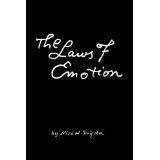
The title is a proud one, and it is connected to my conviction that, although emotions are probably the most individual and often idiosyncratic of human phenomena, our insights into them have reached the point that we can begin specifying the laws that govern the elicitation and development of emotions. These laws may not be hard and fast, but they are reasonably predictive.
The major law of emotion is the law of situational meaning. It states that emotions arise in response to patterns of information that represent the meaning of eliciting situations. For example, personal loss tends to elicit grief. Being the object of tender approach, a person with relevant sensitivities is bound to fall in love. Suffering frustration tends to elicit anger, or at least hostile action tendency. Event outcome threat elicits fear and self-protection.
A second law concerns the personal importance of the eliciting event: it is the law of concern. It states that emotions arise in response to events that are important to the individual’s concerns. Furthermore, emotion response patterns tend to be stronger the more the eliciting event is important to the perceiver. One is more aggrieved by having lost a good friend than by having lost a mere acquaintance.
The laws one can consider third are a host of laws that grasp the impacts of temporal course, repetition, unusualness, and the like: the laws of change, of habituation, and of comparative feeling. The law of change states that emotions are elicited by expected or actual changes in favorable and unfavorable conditions. The law of habituation states that both continued pleasures and continued hardships diminish their intensity over time. The law of comparative feeling states that the nature and intensity of emotion depends on the frame of reference with which events are compared.
For example, a salary increase has more emotional impact when the increase for one’s colleagues is less. An event’s affective value depends upon the other pleasures and pains that occurred in close temporal vicinity, and their expectedness and unexpectedness. Laws like these also govern the scope of one’s own emotional actions: there is a law of care of consequence. According to it, every emotional impulse elicits a secondary impulse that tends to modify it in view of its possible consequences. This is the law at the heart of emotional regulation, which kicks in as soon as an emotion is elicited. The exception is constituted by those rare cases in which emotions are truly uncontrolled as in blind frenzy.
I think here is no doubt that the number of laws of emotion is fairly large, since several different kinds of constellations have a distinctive impact over emotional responses, notably over time. These include, I think, the constellations that have an impact over time, even if the emotion-inducing event occurred only once. They might involve a law of traumatization. When a one-time event or life period damaged one’s self-image, it may never be overcome. Examples include having been a slave, or having been submitted to profound humiliation, as in having been raped, or having lost a child.
Were you ever tempted to leave the University of Amsterdam, where you spent your whole career? Is the Dutch system good for academics?
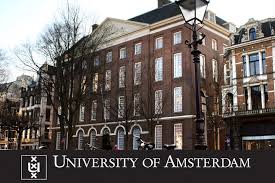 I spent one year at Harvard, with Bruner. That was an enjoyable and fruitful year. Beyond that, I never was tempted to leave Amsterdam. I developed a group that explored emotions theoretically, and developed questionnaires to measure relationships between appraisals, differences between different emotions, and some cultural differences. The system in the Netherlands changed over the years in the amount of guidance and coherence in the strategic selection of research topics by staff and by students.
I spent one year at Harvard, with Bruner. That was an enjoyable and fruitful year. Beyond that, I never was tempted to leave Amsterdam. I developed a group that explored emotions theoretically, and developed questionnaires to measure relationships between appraisals, differences between different emotions, and some cultural differences. The system in the Netherlands changed over the years in the amount of guidance and coherence in the strategic selection of research topics by staff and by students.
What do you consider to be your most significant contributions to affective science?
For me, one of the most significant “discoveries” about “emotions” has been that emotions are not primarily “states” of individuals that deserve some state name (“anger”, “fear”), nor events that happen within individuals, and occur or are felt by them. They do not just happen “within a mind”. They are relational engagements that take place between an individual and some object or event.
The two related entities – self and object – can fulfill different roles. One element affects the other one, and viceversa. Environments not only provide stimuli: they contribute to interactions. To some extent, this holds even for interactions with non-social events. Hitting one’s head against a kitchen shelf modifies one’s behavioral progress.
A second discovery was that self-object relationships and their changes are implemented by actions and proto-actions: urges, action preparations, strivings, and the revealing “thin slices of behavior,” examined notably by the late Ambady that signal relational intents (Ambady & Rosenthal, 1992, Psychological Bulletin, 111, 256-274).
This perspective made me move my focus of attention away from “emotions” –differently labeled emotion categories and their properties–, and towards the urges and strivings that motivate aims, actions, and feelings that form the dynamics of self-object relationships.
What I consider a useful contribution is also my analysis of the functions of facial and other bodily expressions. I think they, too, are to be viewed as actions rather than as communicative signals. They are parts of relational actions that modify the relationships between oneself and some object, partaking in approach and withdrawal, opening up and closing down with respect to elements of the world, or the world as the agent as dreamt or imagined. Which is what renders “expressive behavior” expressive or impressive, and intelligible. I did not discover this but, I think, I endeavoured to give it back the place it actually had in theory for a long time (in work by Gustav Kafka and Karl Bühler). Facial expressions do not “express” emotions. They simply implement the individual’s action tendencies.
You have lived in Amsterdam your entire life. What do you like to do for fun in the city? Is Amsterdam changing in a way you like? What are your three favorite restaurants in Amsterdam? Do you enjoy cooking, and if so do you have a favorite recipe to share?

Amsterdam is a very nice town, with many lovely corners. There is much to do in terms of occasions for enjoyment, like concerts, opera, stage plays, a very nice film museum called “Eye” which shows a range of shows every day, including movies from former times, and overviews of great directors. Then the top museums have recently finished restoration: the Rijks Museum, with its Vermeers and Rembrandts, and the Rembrandthuis with its etchings; so has the more modern-oriented Stedelijk Museum (Municipal Museum). Then there are several 17th century churches, and the picturesque streets in neighborhoods of that time.
In Amsterdam, so far there is not much public violence. The police is decent, unobtrusive, and unaggressive. There are several nice open-air markets. People as a whole are tolerant, for instance with regard to sexual preferences and their open manifestations, including a yearly gay festival day with gay canal ride. On occasion, tourism takes a lot of place and makes a lot of noise.
High-class restaurants are The Grand, in a former city hall in the center of town, and the Oyster Bar, a pretty good fish-restaurant. There are a large number of good Indonesian and Chinese restaurants. There is a good, agreeable, and rather intimate restaurant called “Elkaar” on Alexanderplein, near the Museum of the Tropics. I like cooking. One of my favorite recipes is Indian mango soup, which I reproduce here.
Gujarati Mango Soup by Madhur Jaffrey from From Curries to Kebabs (Clarkson Potter, 2003)

Serves 6
Among Gujarati families in India and South Africa, this wondrous, sweet, sour and hot, soupy dish is served in small bowls (katoris) as part of the meal, with fried puffy breads (pooris) as an accompaniment. What I do at my dinners is something different. I strain it, removing most of the seeds and leaves, and then serve it all by itself as a soup in very small quantities.
Both India and South Africa produce excellent mangoes, so this is really a seasonal dish made when good mangoes are abundant. In the West, mangoes of that caliber are hard to find and I make use of the canned puree of India’s very best Alphonso mangoes, sold by all Indian grocers. It takes me about 10 minutes to make the soup, from start to finish.
If you can find fresh, sweet, juicy, fully ripe mangoes, wash them, then, one at a time, squeeze them with both hands, almost as if you were giving them a good massage. The flesh should turn to pulp. Then peel them. “Milk” the stone or seed, collecting all the juice in a bowl. Pour a little hot water on the stone and “milk” it some more. Do the same to the skin, pouring a tablespoon or so of hot water on it to get at all the juice. Collect all the mango juice in a bowl. You should have about 5 1/2 to 6 cups. Use this thin juice whenever water is called for, letting it cool first. You may need to add a bit more sugar.
Quantities Ingredients
2 tablespoons chickpea flour
1/8 teaspoon ground turmeric
3/4 teaspoon ground cumin
3/4 teaspoon ground coriander
1/2 cup plain yogurt
3 cups thick Alphonso mango pulp (sweetened) from a can
1 1/4 to 1 ½ tsps salt
1/2 teaspoon sugar, or to taste
2 hot chilies (with small slits cut in them)
2 tablespoons corn or peanut oil
1 pinch ground asafetida
1/2 teaspoon whole brown mustard seeds
1/2 teaspoon whole cumin seeds
2 whole hot dried red chilies
1/8 teaspoon whole fenugreek seeds
10 to 15 fresh curry leaves, if available
1. Put the chickpea flour, turmeric, cumin, and ground coriander in a medium bowl. Very slowly add 1/2 cup of water, mixing with a wooden spoon as you go. There should be no lumps left. Add the yogurt, mixing it in with a whisk. Pour in the mango pulp and an additional 2 cups of water. Add the salt, sugar, and fresh chilies. Mix well.
2. Pour the oil into a thick, medium, lidded pan and set over medium-high heat. When the oil is very hot, put in first the asafetida and then, in quick succession, the mustard seeds, the cumin seeds, the chilies, the fenugreek seeds, and, lastly, the curry leaves. Take the pan off the heat.
3. Stir the mango mixture from the bottom and quickly pour it into the pan. Stir. Put the pan over medium heat and bring to a simmer. Simmer over very low heat for 5 minutes, stirring with a whisk or spoon as you do so. Take the pan off the heat, cover, and leave for at least 30 minutes to allow the spices to release all their flavors.
4. Before serving, stir the soup and reheat it gently. Strain it through a coarse strainer. Spoon out some of the smaller seeds — the mustard and cumin — from the strainer and stir them back into the soup to add some colorful flecks.
What are you working on these days?
Together with two colleagues, we recently have been writing about impulsive actions: actions that rapidly follow a stimulus event, that take no time for deliberation, and that still are purposive: how is that possible? I also am trying to produce a survey of the basic processes that presumably underlie the major phenomena that we (English-writing psychologists) call “emotions”.

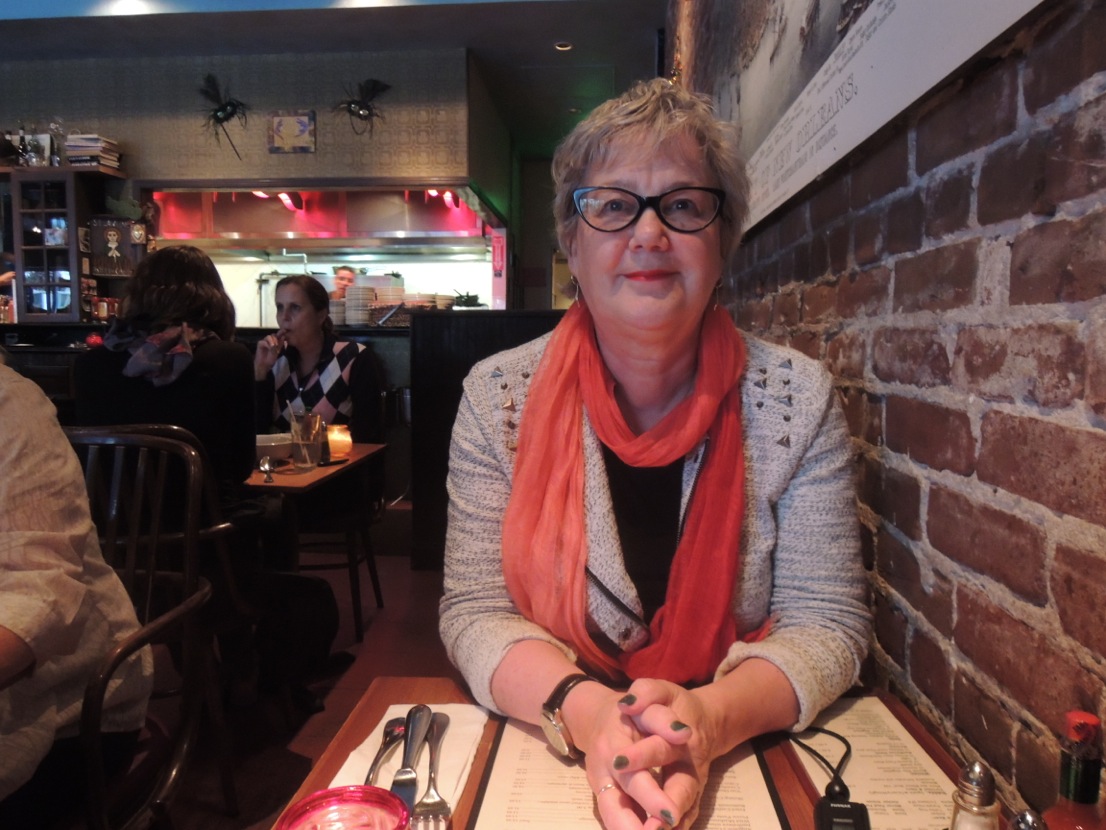
Over evolutionary time, the basic processes increased in number and in scope. From bacteria onwards, organisms developed the capacity to respond differentially to inputs depending on their positive or negative “value” with respect to the organism’s functioning – a predecessor of affective discrimination. The basic processes engaged with increasingly complex environmental agents. They progressively became capable of predicting future inputs from current inputs, setting aims for actions to modify self-object relationships, controlling ongoing processes so as to produce “emotion regulation”, finally leading to full-grown affective processes with associated feelings of pleasure and displeasure.
But I am growing old. I like to spend time with my wife and my children. And to sit in my small garden, looking at the red, white, orange, and pink roses I grow.
Please list five articles or books that have had a deep influence on your thinking
Sartre, J.P. (1939). Esquisse d’une theorie phenomenologique des émotions
Solomon, R.C. (1976). The passions
Proust, M. (1913). Un amour de Swann
Freud, S. (1927). The future of an illusion
Elster, J.(1999). Alchemies of the mind.
What do you think is the main question that future affective science should be focusing on?
I am not sure that there is just one main question that affective science should be focusing on. I see at least three. One is to develop a systematic account of the various kinds of self-object relationships human and other animals are capable of, and the neural and other underpinnings that enable them.
Second is development of a systematic account of motivation. Joseph Ledoux, in The synaptic self worried about the lost world,–the disappearance of such a systematic account when the listing of needs or drives, as proposed by Murray (1983) fell in disfavor because motivational dispositions with biological backgrounds were hard to separate from motivational dispositions with historical and socio-cultural backgrounds
Indeed, systematic treatments of motivation have been sparse over the years. The ones that come to my mind are limited to those by Gallistel (Gallistel, C.R. (1980). The organization of action: A new synthesis. Hillsdale: Erlbaum) and by Vallerand and Thill (Vallerand, R.J. & Thill, E.E. (1993). Introduction à la psychologie de la motivation. Quebec, Canada, Editions Etudes VIvantes).
Third is solving the problem of identifying the processes enabling conscious experience, and the functions of such experience. As to the latter issue: the world would be dull without conscious experience, for reasons that are not very clear to me.
